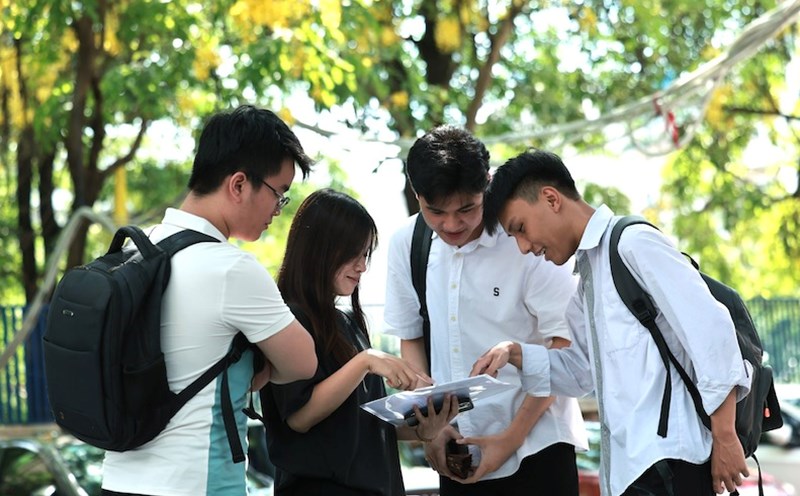Previously, on May 7, baby T.N.P.D (10 years old) was taken to Cho Ray Hospital for emergency treatment after a serious accident where a tree suddenly fell on his head while he was walking on the road. At first, the family thought the child only had minor injuries such as broken arms and legs. However, emergency results showed a critical condition:row index of children under 3 - a level of danger that directly threatens their lives, almost no chance of survival.
In the first hours, doctors had to perform intensive care to keep the baby's fragile life. The child was constantly treated in a deep coma, had to use a ventilator and be feed through a tube. In the early stages, the baby's brain was severely damaged, almost without reflection. The doctors have coordinated with many specialties to closely monitor each change.
After 67 days of active treatment, the child began to show signs of recovery: crying, recognizing her parents, having a listening reflex. Although it is not possible to eat it on its own and must be transmitted through the sonde, this is a sign that the brain is recovering. The family is still receiving special care instructions to help the child recover and reintegrate into daily life soon.
Doctor Tran Nguyen Hoang Bao - Department of Neurosurgery, Cho Ray Hospital said that when admitted to the Emergency Department, the child was assessed to have a coma of only 5 points on the Glasgow scale, with unstable eyes and stiff hands. Immediately, doctors performed an endotracheal placement, intensive care and a CT scan of the skull. The results showed that the child had a spreading cerebral impact, scattered bleeding and cracked skulls on both sides of the head tops. Initial diagnosis was spentir fibroids with severe skull congestion.
The child was then transferred to the Neurosurgery Department for further treatment. After 2 weeks of active resuscitation, the child had progress, could breathe on his own and the perception score increased to 7-8 points. However, during the monitoring period at the Neurosurgery Department, doctors discovered that the fluid mass under the scalp was gradually growing on both sides. Diagnostic images confirmed the damage to the tangles that caused the cerebral fluid to leak out.
The surgical team removed the damaged bone area and patched the retain to prevent leakage. After surgery, the patient's condition improved, but there was still a temporomandibular expansion - a complication that can affect nerve function in the long term. Doctors continued to perform surgery to place a brain-mingled circulation system from the preeclampsia to the abdomen (VP shunt - V-P shunt).
After 8 days of the second surgery, the child was more alert, recognized relatives, and was able to perform medical procedures, although it was still slow. The child is expected to be discharged from the hospital in the near future, continue to recover at home and have regular check-ups to assess nerve function.











